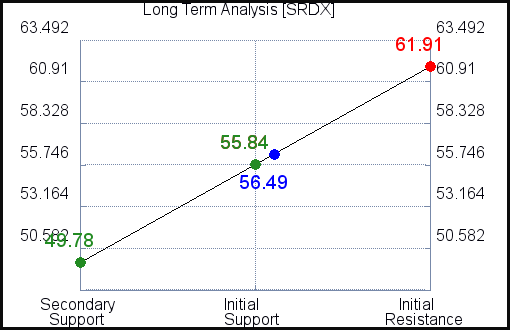
Under shade, PIF7 is in an active form and interacts with the HAM1/HAM2-associated histone methylation reader MRG2 to induce histone hyperacetylation and expression of genes involved in auxin biosynthesis.

An increased sugar (glucose) level promotes the association of HAC1 with WRKY18 and WRKY53 to induce H3K27 hyperacetylation and transcription activation of sugar-responsive genes and genes involved in anthocyanin biosynthesis (right panel). Pathogen-induced SA accumulation promotes the formation of the HAC1-NPR1-TGA2/5 complex to induce histone hyperacetylation and transcriptional activation of immunity-responsive genes (e.g. In response to light and salt stress, GCN5 interacts with unknown transcription factor(s), probably via an ADA2 adaptor to regulate the expression of light/salt-responsive genes (right panel). AREB1 then recruits the ADA2b-GCN5 complex to NAC genes to induce hyperacetylation and expression (middle panel). ABA signaling phosphorylates AREB1 and induces its expression. In the presence of auxin, bZIP11 functions as a quantitative modulator to boost auxin-mediated transcription by recruiting the ADA2b-GCN5 complex (left panel). Histone acetyltransferases in signaling cascades. At nighttime, HDA6 and LDL1/2 interact with TOC1 to repress the expression of CCA1/LHY. In the evening, the Evening Complex (EC) interacts with HDA9 and HOS15 to repress TOC1 and GI expression. During the daytime, PPR5/7/9 recruit TPL/TPR and HDA6/19 to repress CCA1/LHY expression. HDA6 and LDL1/2 interact with CCA1/LHY to repress the expression of TOC1 in the morning. (E) Histone deacetylases in the circadian clock. JA-induced JAZ degradation releases the repression of ethylene-responsive genes. Ethylene stabilizes the transcription factors EIN3/EIL1, which are repressed by JAZ and HDA6. (5) Ethylene promotes the nuclear import of EIN2-C to facilitate its interaction with ENAP1-SRT1/2 to attenuate H3K9ac in ethylene-repressed genes. (4) High levels of ABA promote the interaction between MYB96 and HDA15 to induce H3 and H4 hypoacetylation and regulate ABA-repressed genes (e.g. In the presence of JA, JAZ is degraded, releasing MYCmediated transcription repression. (3) In the absence of JA, JAZ and NINJA interact with TPL/TPR, which further recruits HDA19 and HDA6 for histone deacetylation and transcriptional repression. BES1/BZR1 recruits the TPL/TPR-HDA19 complex via the EAR motifs to repress the expression of BR-repressed genes. (2) BR promotes the nuclear accumulation and DNA binding activity of BES1 and BZR1. Auxin induces Aux/IAA protein degradation and thus releases the transcription factors ARFs. (1) In the absence of auxin, the repression of auxin-responsive genes by Aux/IAA-TPL/TPR requires deacetylation by HDA19. (D) Histone deacetylases in hormone signaling. Darkness and nitrogen deficiency induce HY5 degradation to release the inhibition on ATG5 and ATG8e, leading to induction of autophagy. (3) Under light, HY5 interacts with HDA9 at ATG5 and ATG8e loci to inhibit cell autophagy. IAA19) and cell wall organization-related genes (e.g. (2) In light, HY5 and NF-YCs interact with HDA15 at the promoters of auxin biosynthetic and signaling genes (e.g. In light conditions, PIFs are phosphorylated and degraded, releasing HDA15 from chromatin and transcriptional repression of these genes. (1) Under dark conditions, HDA15 associates with PIF3 and PIF1 to mediate H3 and H4 deacetylation and repress the expression of chlorophyll biosynthetic/photosynthetic and seed germination genes. (C) Histone deacetylases in light signaling. Phosphorylated HD2B re-localizes from the nucleolus to the nucleoplasm and modulates transcriptome alteration and epigenome reprogramming.

(3) Upon recognition of bacterial flagellin at the cell surface, the protein kinase MPK3 phosphorylates HD2B. WRKY38/62 recruits HDA19 to fine-tune basal defense responses. (2) Bacterial infection induces salicylic acid (SA) production and WRKY38/62 expression. (1) Bacterial infection induces the expression of WRKY53, which recruits the HDA9-PWR-HOS15 complex to suppress expression of NLR genes and leaf senescence genes. (B) Histone deacetylases in bacterial pathogen response.

Cold temperatures induce HD2C degradation by the HOS15-mediated proteasome pathway. (3) At normal temperatures, HOS15, CBFs, and HD2C form a repressive complex targeting COR genes. (2) At warm temperatures, the HDA9-PWR-HOS15 complex induces hypoacetylation at the YUCCA8 locus and facilitates the eviction of histone variant H2A.Z, resulting in a permissive chromatin environment. Warm temperatures induce PIF4 to compete with HFR1 and inhibit the association of HDA15 at thermal-responsive genes. (1) HFR1 associates with HDA15 to repress thermal-responsive genes. (A) Histone deacetylases in temperature response. Histone deacetylases in signaling cascades.


 0 kommentar(er)
0 kommentar(er)
